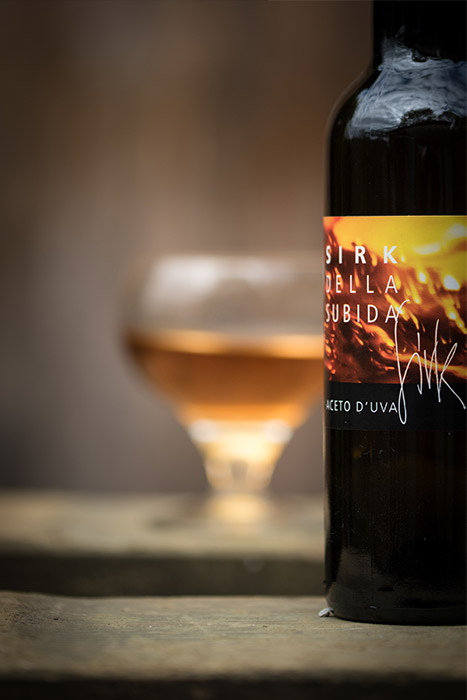Whilst grocery shopping in the condiments isle have you ever stopped to think where our average vinegar comes from, how it’s made and which ingredients are involved? A staple food in most pantries across countries, vinegar is often taken for granted as if it were invariable, with no options for different varieties.
Apparently man has known vinegar for as far back as 2000 years, making it the most common acid-based ingredient worldwide. Different raw materials are involved in its production: fruit, wine, beer, honey, rice, molasses… each culture has their own. Historically, acidity in food was a consequence of preservation necessities, and often was probably achieved by mistake. A batch of wine gone bad for example. Today it has also come to play an important role in cooking – as one of our main flavors in the search for balanced dishes.
In nature, any sugary matter acidifies spontaneously – vinegar being the result of a double fermentation – through a process that is first alcoholic and secondly acetic. The name comes from the French “Vin aigre” meaning sour wine. Basically, once it has finished its alcoholic fermentation, wine left in contact with air turns sour. Sour wine is not, however, the same as fine vinegar made with care. Controlling the process means making sure the right bacteria are activating the fermentation.
A good vinegar isn’t made in a hurry, the process takes time and air exposition is essential. Once it has reached the right acidity, some of it is drawn off and more wine (or other ingredient) can be added. The process can be repeated indefinitely. This is why “mothers” can be passed on for generations. The “mother” is a gelatinous scum full of living bacteria which ferment vinegar (similar to the scoby we make kombucha with). Most retail vinegars are mass-produced, highly diluted with water, made from inferior wine or other ingredients using techniques that save time, but sacrifice quality. Luckily there are a very small number of craft vinegar producers that make incredibly high quality vinegars.
We have recently visited Josko Sirk in the far North-Eastern region of Friuli Venezia Giulia that makes a unique skin-contact grape vinegar. The Sirk family works very closely with the culture and territory they operate in. The vinegar production is just one of their many amazing projects – which include a traditional trattoria, an amazing Michelin star fine dining restaurant, guest homes immersed in nature and much more

This vinegar is made exclusively from local prime white grapes from the renowned Collio wine region. They make vinegar from the best grapes that would otherwise be used to make wine (indicating the quality of the raw material). It is very rare to find vinegar made from fresh grapes as its usually made from wine, most often from bad wine. The grapes used by Sirk are pressed and left to ferment on their skins in wooden barrels in the family’s all-wooden vinegar house. It is aged for 3 to 5 years. Just like any great wine, time is essential: it sharpens, matures and becomes grand. No other ingredients are added and the product is not diluted with water.
The quality of the grapes, the slow process and the presence of noble moulds convey a very complex structure, persistency and great minerality. The result is a fine product, an incredible ingredient to enhance dishes and balance foods. Strong and displaying character, it is at the same delicate and elegant.